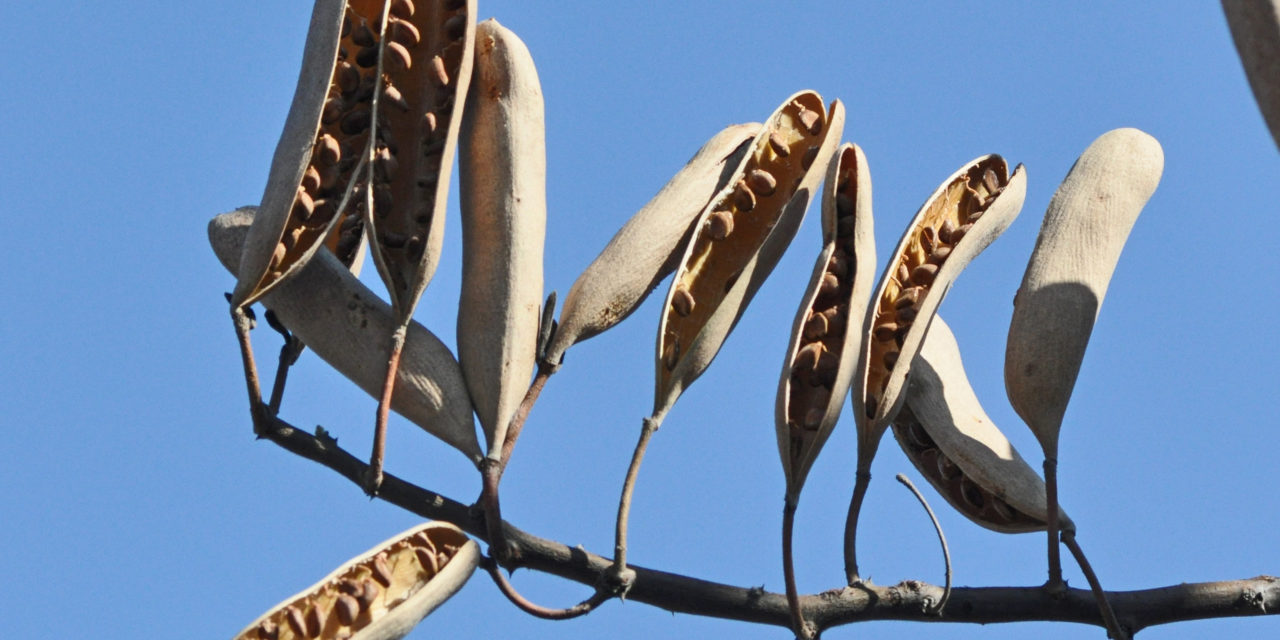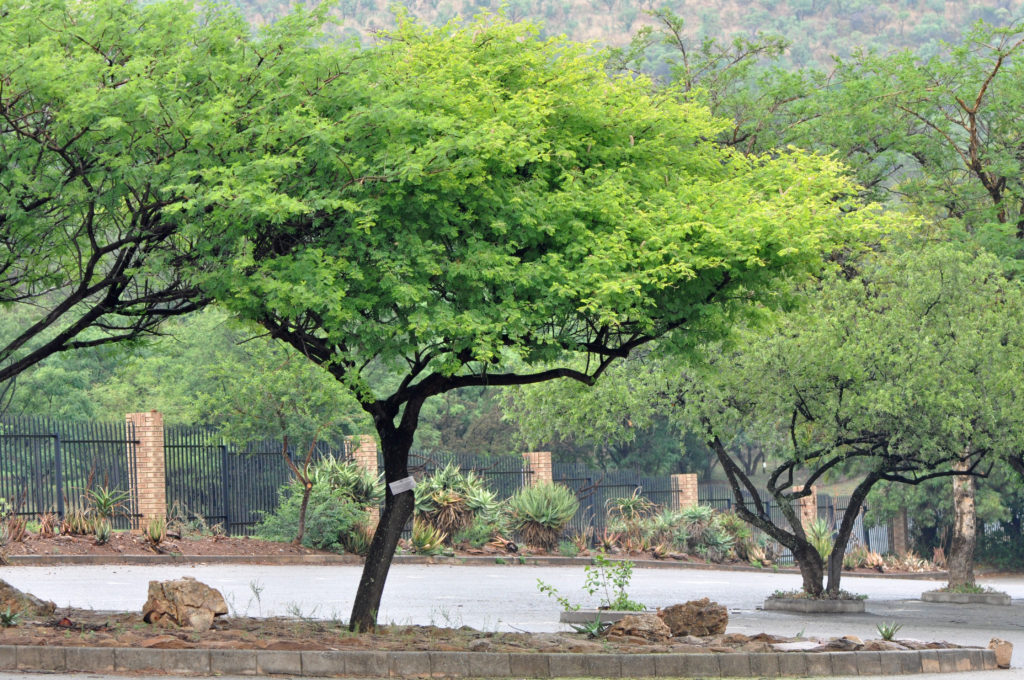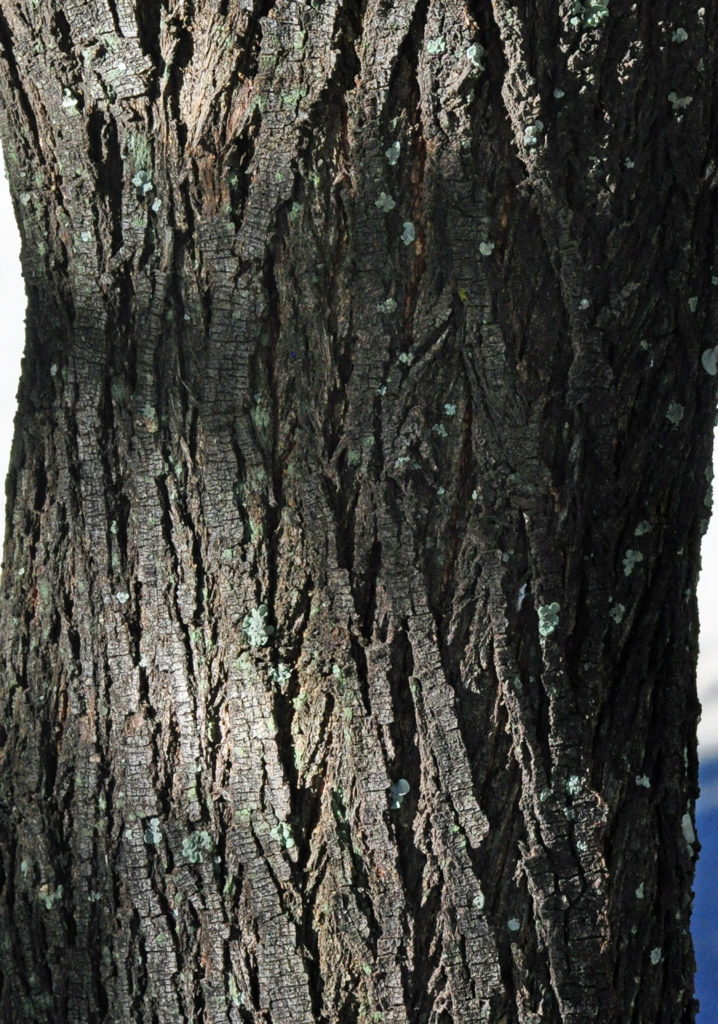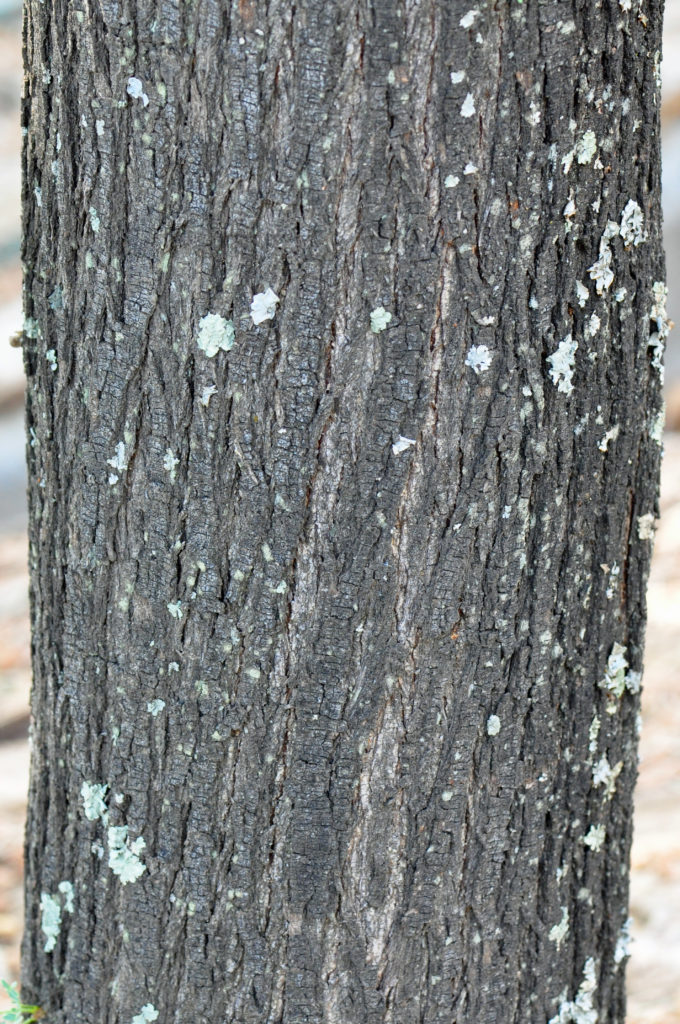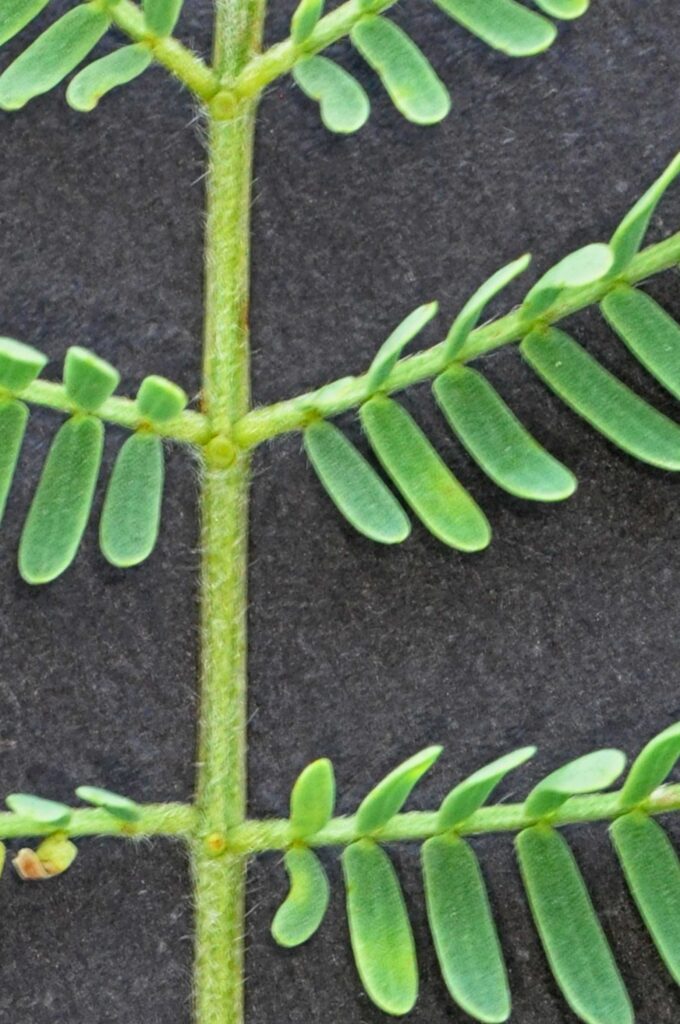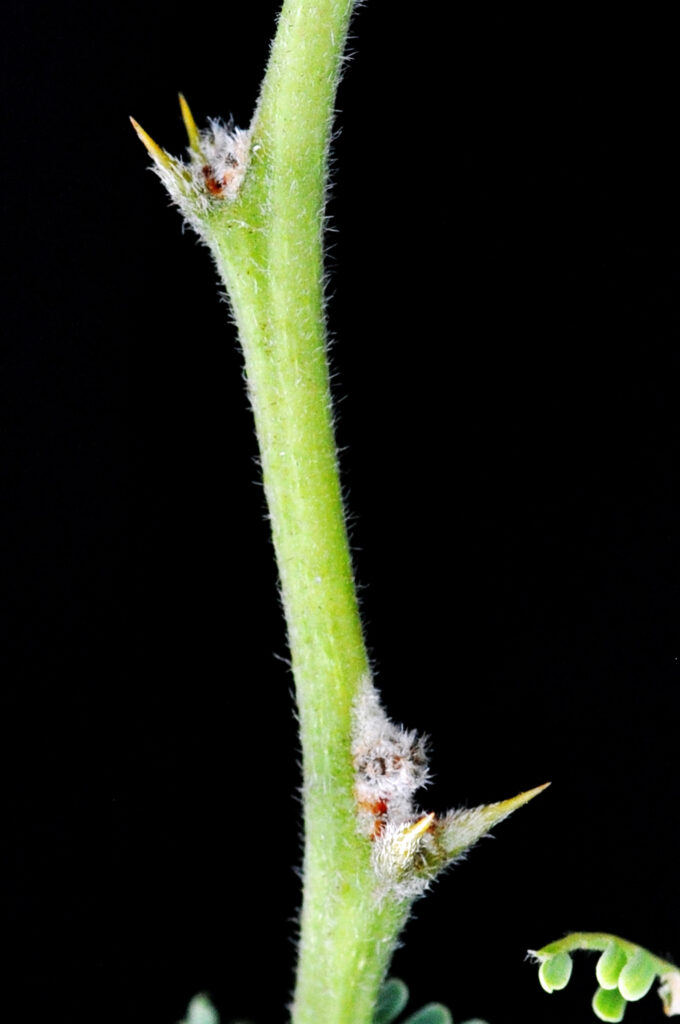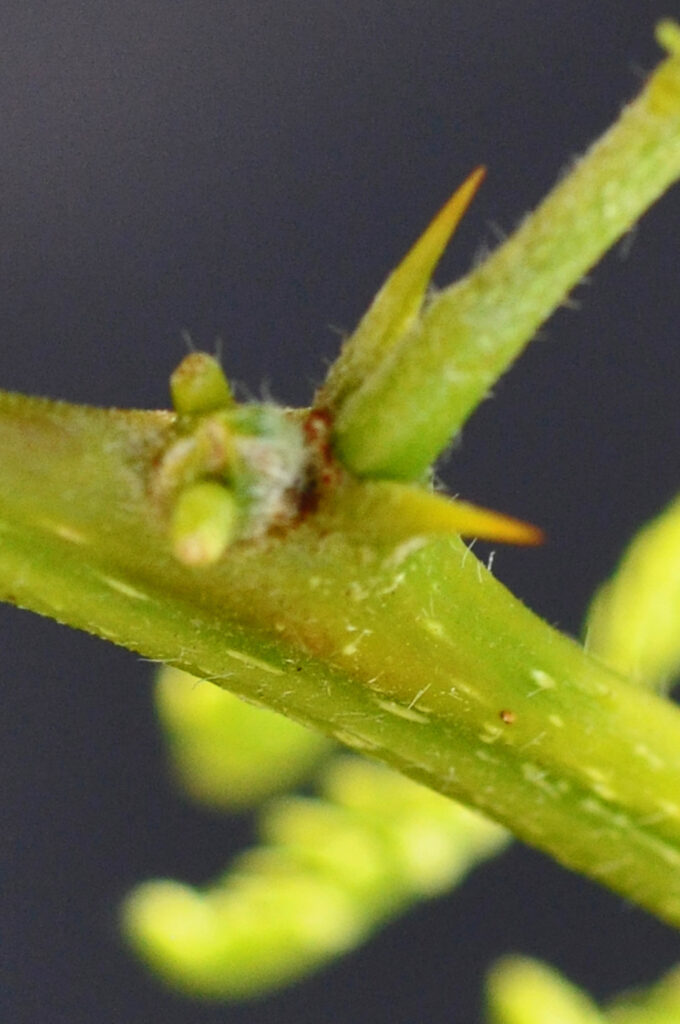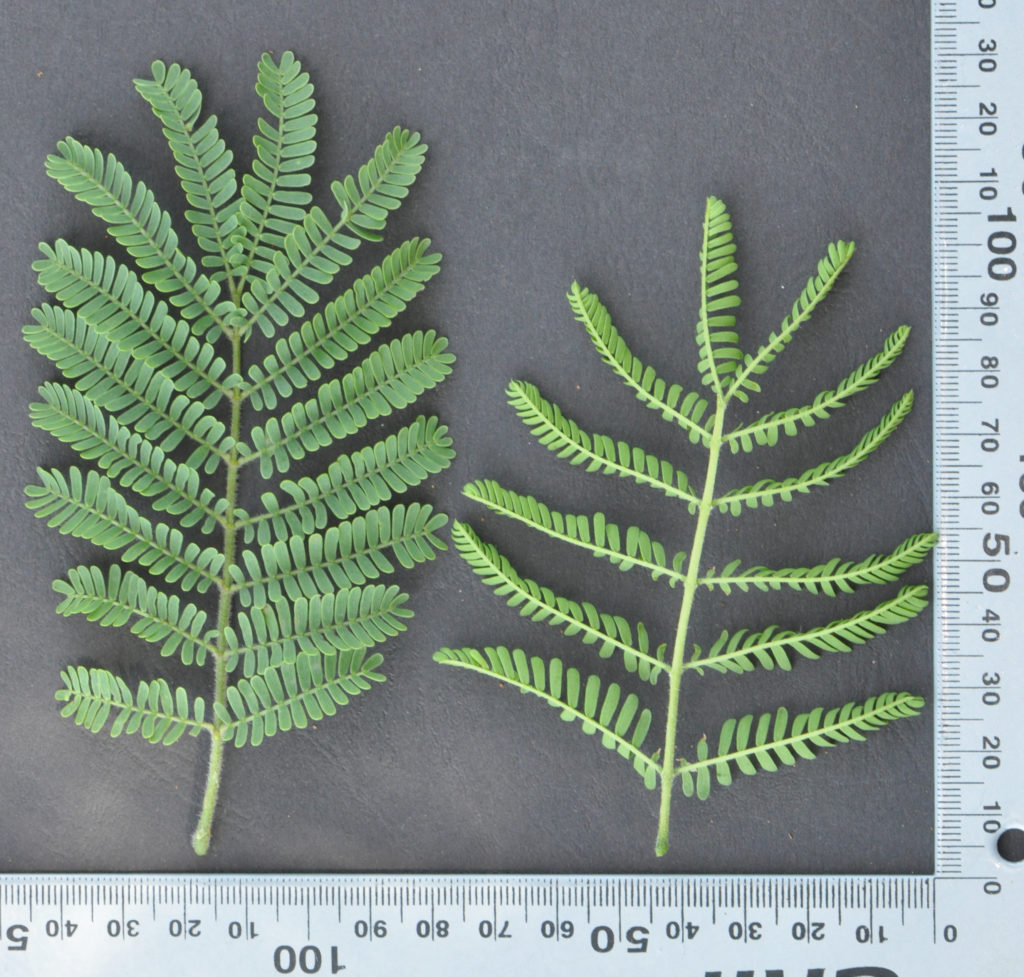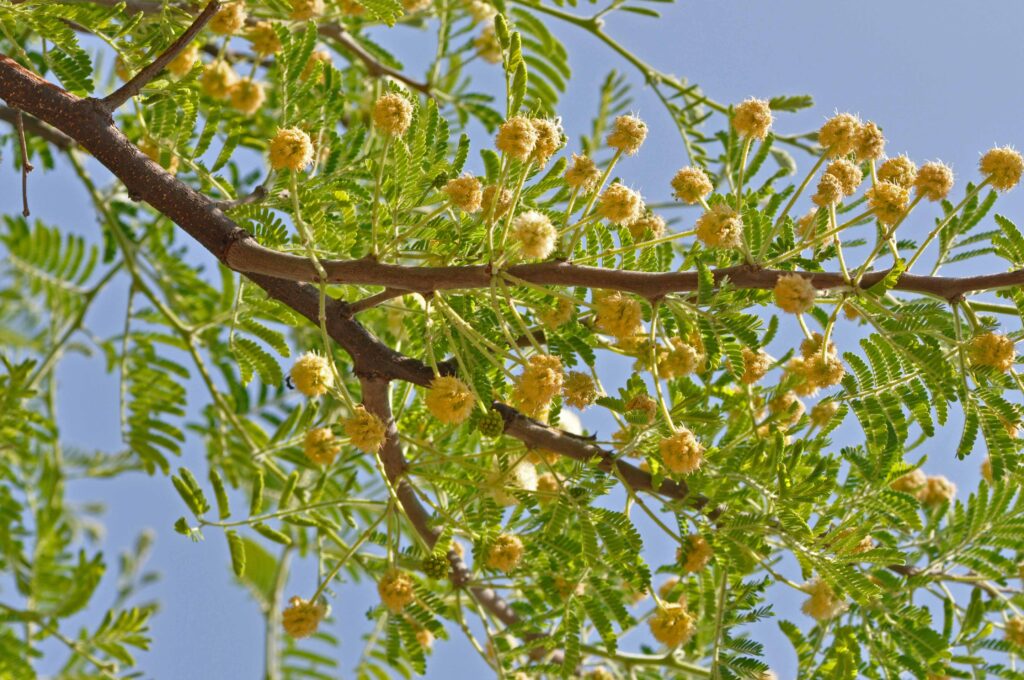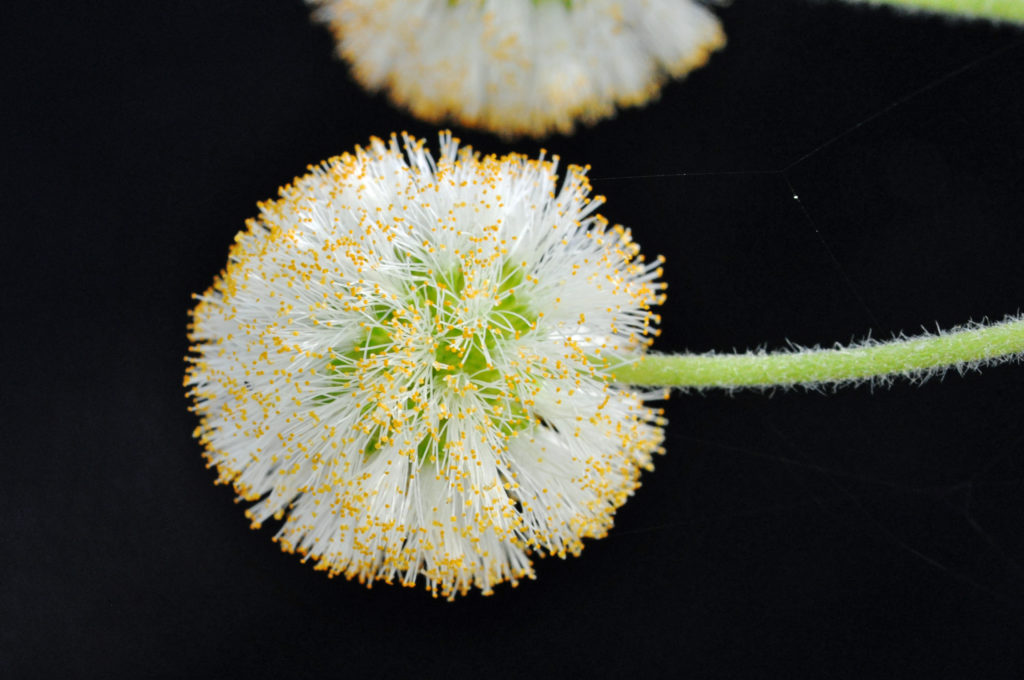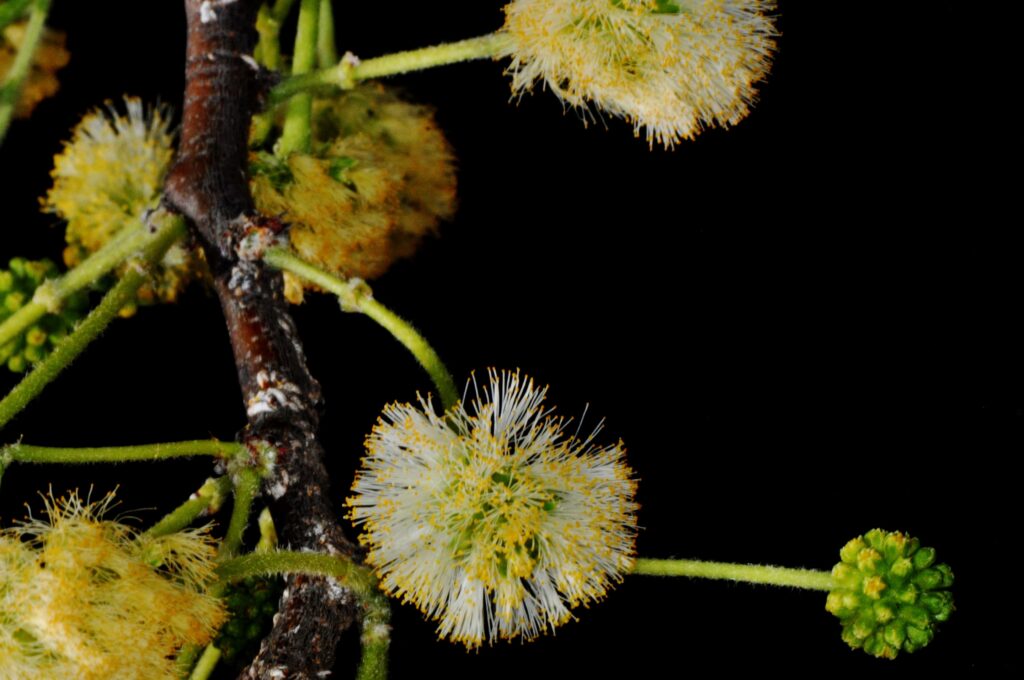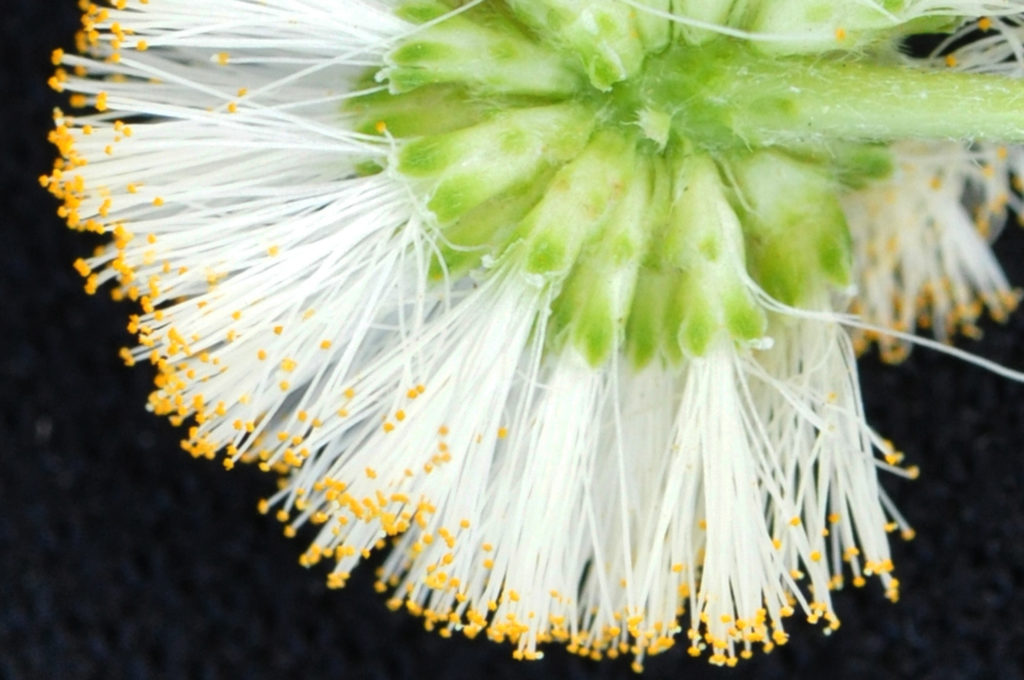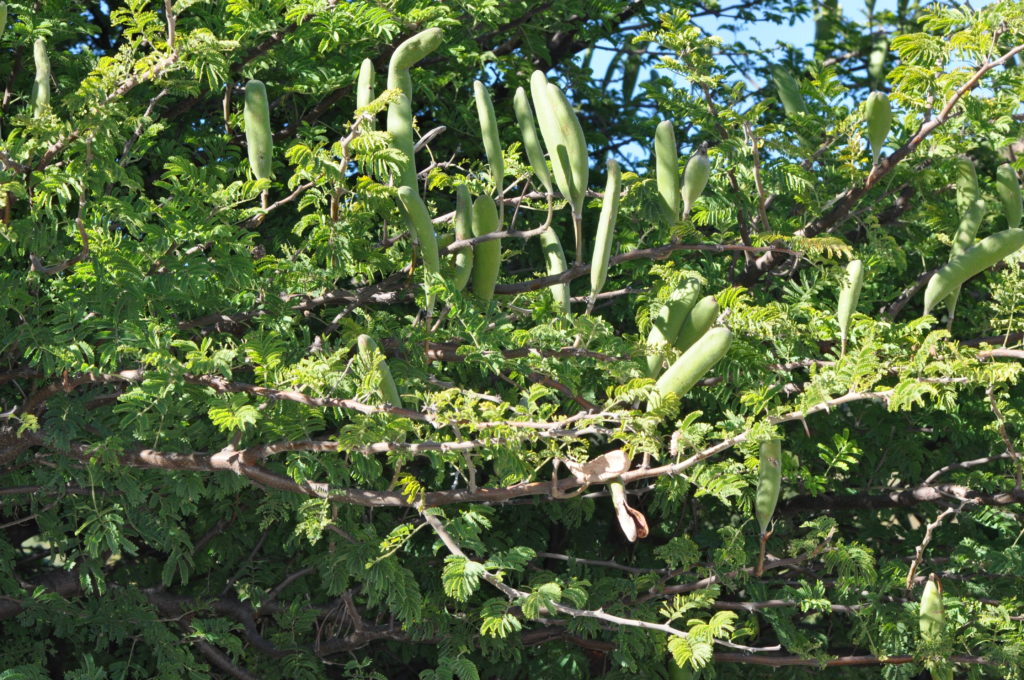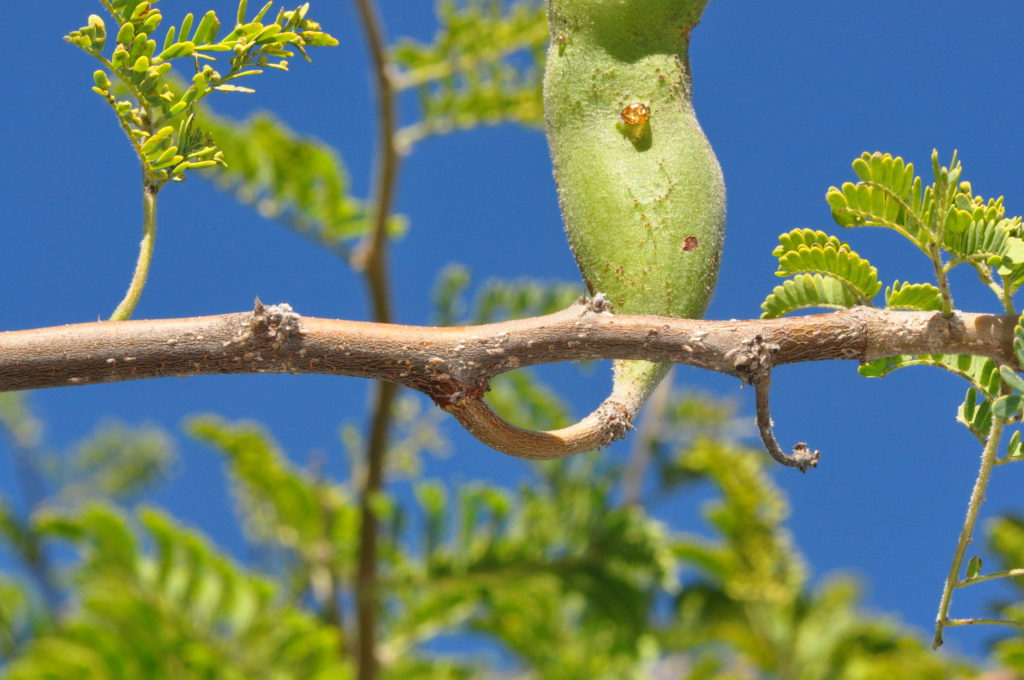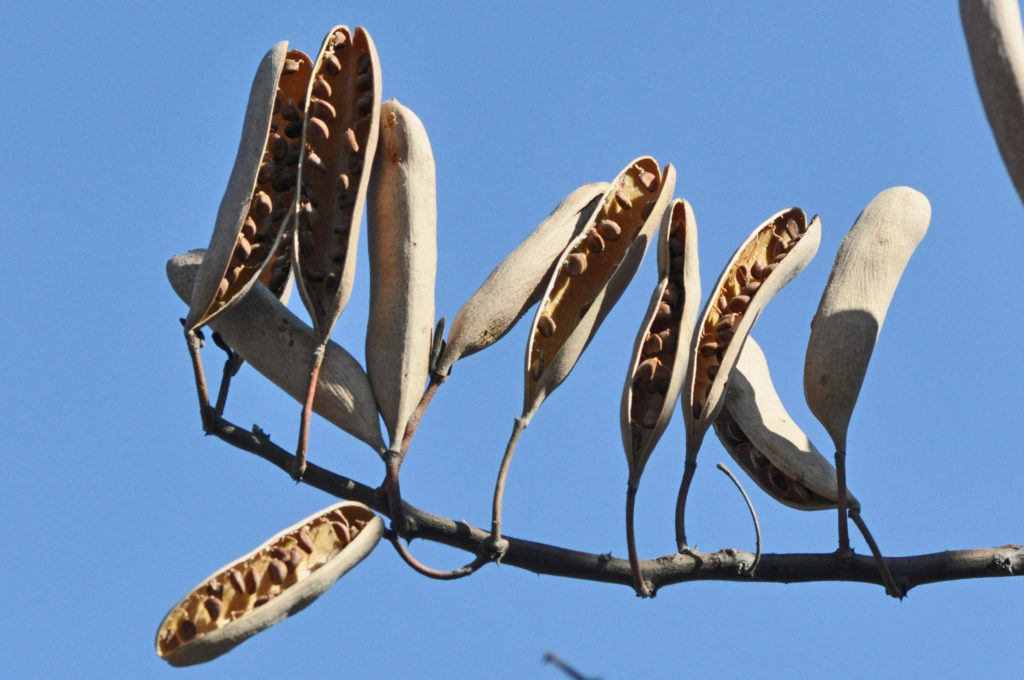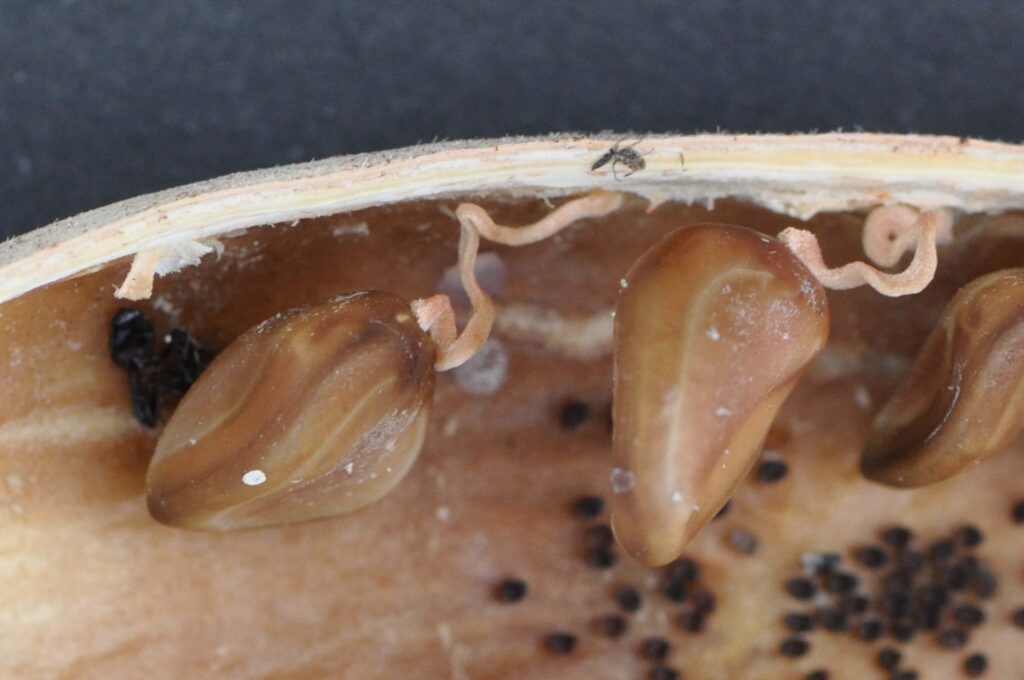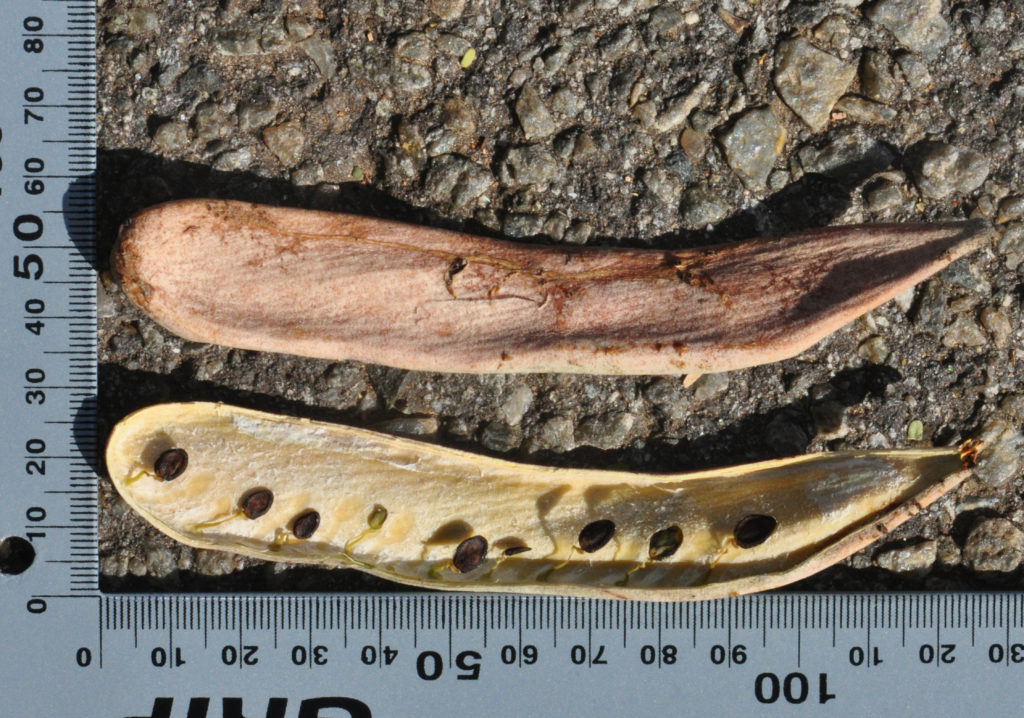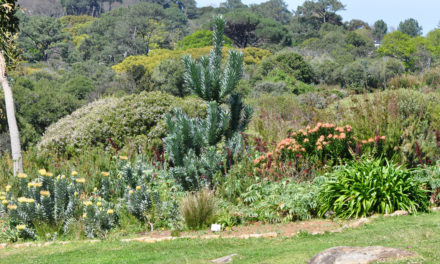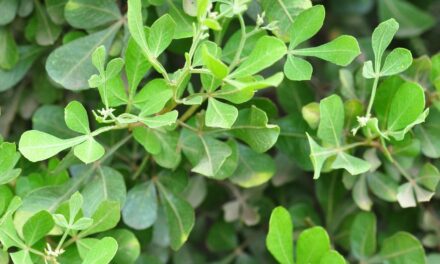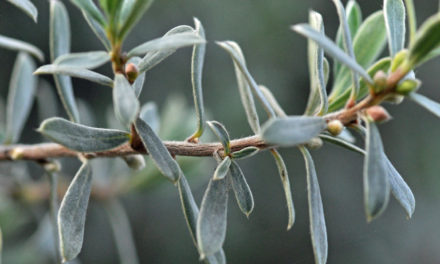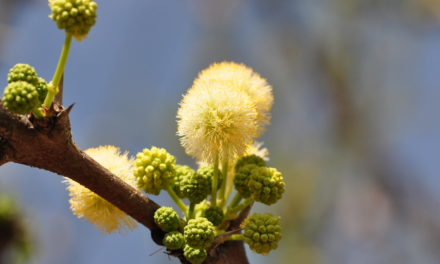General Info – summary
This Tree survives drought & cold. Has dry flaking bark & may reach 5m+ high. Small, bipinnate Leaves have small leaflets and paired spinescent stipules. Tiny Flowers develop in reduced spikes with exserted stamens and golden anthers. The pistil has a superior ovary and a late developing terminal stigma. The dehiscent Fruit has vertical, upright, straight swollen pods with up to 14 flattish, red-brown seeds.
Description
Vachellia hebeclada subsp. hebeclada
Previous Names: Acacia hebeclada subsp. hebeclada, Acacia hebeclada var. stolonifera, Acacia stolonifera.
SA Tree No. 170.
Common names: (Afr) Blouhaak, Blouhaakdoring, Blou-haakdoring, Blouhaakdoringboom, Ghabos, Ghobos, Kersdoring, Muisbos, Muisdoringbos, Muis-doringbos, Pendoring, Sikiboontjie, Siki-boontjie, Sikidoring, Siki-doring, Tarassidoring, Teransibos, Teransiebos, Terassiebos, Terassiedoring, Terransibos, Terrassiebos, Transiebos, Trassiebos, Trassiedoring, Volstruisbos. (Eng) Candle Acacia, Candle Thorn, Candle-pod Acacia, Candle-pod Thorn, Mouse Bush. (Northern Sotho) Mokgwaripa. (Setswana) Mohae, Sekhi, Setshi, Setsi.
Family: Fabaceae, or Leguminosae (Pea, bean or legume family). After the Orchidaceae and the Asteraceae, the Fabaceae is the third largest Angiosperm (flowering plants) family with 700+ genera and close to 20 000 species. Local Tree genera on this website include Acacia (Vauchellia, Senegalia), Albizia, Bauhinia, Bolusanthus, Burkea, Calpurnia, Colophospermum, Cordyla, Cyclopia, Dichrostachys, Erythrina, Erythrophleum, Faidherbia, Indigofera, Mundulea, Peltophorum, Philenoptera, Piliostigma, Schotia and Xanthocercis. The Fabaceae are recognisable by their fruit and by their pinnately compound Leaves. Leaves may also be simple – even bilobed and usually have stipules – some of which may be spinescent. Leaflets are usually entire. Flowers are bisexual and bracteate. Regular flowers usually have 4-5 sepals and the same number of petals. Irregular flowers have 4-5 sepals and 5 or less petals. Stamens have anthers that have 2 pollen sacs and there are usually at least twice the number of stamens as petals – often 10. The superior Ovary has 1 locule containing 1 or more ovules. The Stigma and Style are simple. The single carpel develops into the Fruit, which is usually a pod. The mature pods may dehisce or break into segments. Seeds vary.
Name derivation: Species of the genus Vachellia and Senegalia were considered members of the genus Acacia until 2005. New Names. The genus Vachellia was named after George H. Vachell (1789 – 1839), chaplain and plant collector in China. Here the inflorescence is capitate (head like) and spinescent stipules are present. Plants in the genus Senegalia – (from Senegal) usually do not have spinescent stipules and the inflorescence is usually a spike. hebeclada – hairy branches.
Conservation: National Status: L C (Least Concern). Assessment: 2005. (W. Foden and L. Potter).
Tree
This plant may be a Shrub and form thickets up to about 1,5m high. It may also be a is medium sized, single stemmed Tree up to 9m high (photo 587). Branches often occur near the ground. The Crown is rounded or flattened and somewhat spreading. The flaking Bark (photos 43 & 612) is dark brown or grey to nearly black and almost vertically fissured. The mature tree is often wider than high. In these trees, the stout Branches tend to droop. They occur low down and are nearly horizontal (photo 587). Young branches are green and hairy (photo 616 under Leaves). Sub-surface branches can produce new growth away from the trunk (where the old name Acacia stolonifera originated). Young branches are stout, densely velvety and pale to dark. Many hairy branches may arise directly from the soil. Lenticels (a usually raised corky oval or elongated area on the plant that allows the uncontrolled interchange of gases with the environment) occur on the branches – here whitish (photo 59 – under Leaves and 47 under Fruit).
- 587. 2014/11/11. Walter Sisulu NBG. Photo: David Becking.
- 43. 2014/04/29. Walter Sisulu NBG. Photo: David Becking.
- 612. 2015/10/27. Walter Sisulu. NBG. Photo: David Becking.
Leaves
This deciduous tree has up to 4 Leaves at a node (joint from where the leaves may arise. The space between these 2 joints is called the internode). Leaves are bipinnate (compound: twice pinnate. The central axis or rachis has lateral pinnae “branches” not leaflets and the leaflets (pinnules) are on these “side branches”). Size and shape vary. There are 2-9 pairs of pinnae, each with up to 6 to 18 pairs of pinnules (leaflets). Feathery Leaflets are small: up to 7 x 2mm and do not overlap (photo 63). The hairy Rachis (main axis bearing flowers or leaflets is light green, hairy and possesses a gland between the upper pairs of pinnae – photo 63). The hairy Petiole (leaf stalk) is light green, usually less than 2cm long and a petiolar gland may be present. Grooves may appear on the upper surface. The Stipules (basal appendage of the petiole) occur just below the nodes. They are spinescent and the paired Spines produced below the nodes are usually short (photos 616 & 59) but may reach 6cm long and may be straight or, with tips curved down. They are sharp-tipped and may occur in opposite pairs (photos 616) and are brown, white or red-tipped (photo 59) and pubescent (hairy) when young. Spines can be straight or slightly curved downwards.
- 63. 2014/12/02. Walter Sisulu NBG. Photo: David Becking.
- 616. 2015/10/27. Walter Sisulu NBG. Photo: David Becking.
- 59. 2014/12/02. Walter Sisulu NBG. Photo: David Becking.
- 66. 2014/12/02. Walter Sisulu NBG. Photo: David Becking.
Flowers
The flowers develop within scented, inflorescences that are reduced spherical Spikes (simple indeterminate inflorescence with sessile flowers on a single unbranched axis opening in succession towards the apex). These spherical capitula (dense inflorescence with many flowers) are up to 17mm in diameter and located at nodes. Up to 8 spikes may arise from each node. Buds are green due to the colour of sepals and later the petals (photo 383). Peduncles (stalks of flower clusters) are hairy and up to 40mm long (photo 687). The small involucre (one or more whorls of small leaves or bracts standing underneath a flower or flower-cluster) occurs above the base of the peduncles (photo 383). The tiny individual bisexual Flowers are actinomorphic (Regular, symmetrical. Flowers are vertically divisible into similar halves by more than 1 plane passing through the axis). The light green Calyx with slightly darker green lobes is up to 2,5mm long (photo 688). The Corolla is also light green with darker green lobes and is up to 3,5mm long (photo 688). The large number of distinctly exerted Stamens each have long and free white filaments. They end with Anthers that are initially golden coloured (photo 688). This gives the inflorescence an overall creamy-white to orange appearance when observed from a distance (photo 129). There is a single Pistil (a unit of the Gynoecium, the female element of the flower, composed of the Ovary, Style and Stigma) and the superior Ovary has a single locule. A single, small, terminal Stigma and a filiform (thread or filament like) Style are present. At a later stage, the style extends – moving the stigma beyond the older stamens. This helps to prevent self-pollination. Pollination agents include bees and flies. (Jul-Sep).
- 129. 2014/09/23. Walter Sisulu NBG. Photo: David Becking.
- 687. 2016/10/04. Walter Sisulu NBG. Photo: David Becking.
- 383. 2015/09/15. Walter Sisulu NBG. Photo: David Becking.
- 688 2016.10.04 Walter Sisulu NBG. Photo: David Becking. Dissected.
Fruit
The distinctively straight, usually upright Fruit (photo 44) consists of swollen, sausage-shaped, dehiscent Pods, which arises at stem nodes and are only initially pulpy within. The initially green, usually vertical pods have grey hairs and develop on stout peduncles (stalks – photo 47). The top of the pod is rounded and the base tapers (photo 927). They become hard, woody, up to 20 x 4,5cm and are covered with yellowish grey woolly hairs. Visible wrinkles and ridges spiral round the pod. Each pod produces up to 14 reddish brown flattened Seeds that are up to 1,5 x 1,1cm (photo 927). Developing seeds are connected by a thin, twisted Funicle (the stalk by which the ovule is attached to the ovary wall or placenta (photo 365). The pods remain on the tree for some time after the shedding of the seeds. Parasites may consume the seeds (photo 365). (Oct-Apr).
- 44. 2014/04/29. Walter Sisulu NBG. Photo: David Becking.
- 47 2014.04.29 Walter Sisulu NBG. Photo: David Becking.
- 927M 2014.08.05 Walter Sisulu NBG. Photo: David Becking.
- 365 2014.10.28 Walter Sisulu NBG. Photo: David Becking.
Distribution & Ecology
The Tree is not endemic to South Africa. Only the subspecies hebeclada occurs in South Africa. The plant is common in hot dry areas away from the sea e.g. the Kalahari Gemsbok National Park where they may appear as a thicket. It also grows in calcrete (a hardened calcium rich layer in, or on, the soil) and on moist soils. Hyenas, baboons, meerkats and bat-eared foxes eat the Fruit. This tree is cold and drought resistant and is found in the Northern Cape, Mpumalanga, Gauteng, Free State (e.g. in their National Botanical Gardens) North West, and Limpopo. Beyond South Arica, they also occur in Namibia, Botswana and Zambia.
Ethnobotany
This difficult to cultivate small tree is interesting, attractive and graceful. File Seeds before planting. They grow better when planted in mid-summer and may germinate within 2 weeks. The edible Gum is a water-soluble sugary polysaccharide that is exuded to seal wounds and prevent infection by bacteria, fungi and prevents trees from freezing. Local people use Root extracts mixed with fat to dress hair. Roots can penetrate deeply for water. The Wood is strong and used for making axe and hoe handles. Leaves may be poisonous due to the presence of prussic acid (flammable, colourless and extremely poisonous containing cyanide – used in gold and silver mining). This tree is reported to be a host of the southern African desert truffle-like species– Kalaharituber pfeilii. – (the Kalahari truffle). These edible fruits are up to 12cm in diameter and up to 0,2kg. They grow close to the surface and only known to occur in Southern African deserts.
- 49 2014.04.29 Walter Sisulu NBG. Photo: David Becking.
References
Coates Palgrave, M. 2002. Keith Coates Palgrave Trees of Southern Africa, edn 3. Struik, Cape Town.
Foden, W. & Potter, L. 2005. Vachellia hebeclada (DC.) Kyal. & Boatwr. subsp. hebeclada. National Assessment: Red List of South African Plants version 2020.1. Accessed on 2024/02/26.
Lawrence, G. H. M, 1951. Taxonomy of Vascular Plants. The Macmillan Company, New York. Tenth Printing 1965.
Ross, J. H. A conspectus of the African Acacia Species. 1979. Botanical Research Institute.
Palmer, E. & Pitman, N. 1972. Trees of southern Africa, Balkema, Amsterdam, Cape Town.
van Wyk, B. & van Wyk, P. 1997 Field guide to Trees of Southern Africa. Struik, Cape Town.
http://waynesword.palomar.edu/plaug99.htm
http://plantzafrica.com/plantab/acaciaheb.htm
http://posa.sanbi.org/flora/browse.php?src=SP
https://www.sciencedirect.com/science/article/pii/S0254629913003773

